What an incredible Thai Soup recipe with an addictive Savory, Sour, Sweet Heat, that can be adjusted for each bowl right there at the table!
Few soups in the world can match the bold, aromatic magic of Tom Yum Soup. A Thai classic that delivers a perfect balance of savory, sweet, sour, and spiciness with an irresistible touch of funk in every spoonful. Infused with the unmistakable fragrance of the Thai Holy Trinity (galangal, lime leaves, and lemongrass). This Thai Soup is a vibrant explosion of flavor that awakens the senses and is highly customizable yet always addictive. One slurp, and you’ll see why it’s pure yum yum in a bowl, What a wonderful soup!
Why You’ll Love Thai Soup
- Bold, Addictive Flavors: This soup hits every taste bud with its perfect balance of savory, sweet, sour, and spiciness. Plus that signature Thai funk that keeps you coming back for more.
- Authentic & Customizable: Whether you want the classic Tom Yum Goong or my umami-rich version with hondashi and extra tomatoes, you can choose the style that suits your taste while still keeping it 100% delicious.
- Surprisingly Easy to Make: With a few key ingredients, you can create a restaurant-quality Thai soup at home in under 30 minutes. No complicated techniques required!
What is Thai Soup
Tom Yum (also spelled Tom Yam) is a classic Thai soup known for its distinct hot and sour flavors. The name “Tom Yum” roughly translates to “boiling” (Tom) and “mix” (Yum), referring to the cooking method and flavor. This soup is traditionally made with a fragrant broth infused with Thai ingredients. Including the Thai Trinity of (Galangal, Kaffir Lime Leaf, Lemon Grass). Along with Thai Red Chilies for heat with Nam Prik Pao, and Fish Sauce, Lime Juice, Sugar to balance the flavors.
Authentic Tom Yum Soup
Authentic Tom Yum (specifically Tom Yum Goong) focuses on a simple yet powerful combination of ingredients that create its signature salty, savory, sour, sweet, spicy, and aromatic profile. Here are the key ingredients found in the traditional version:
- Lemongrass – Adds a bright, citrusy aroma.
- Galangal – A peppery, slightly floral root that enhances depth.
- Kaffir Lime Leaves – Provides an unmistakable zesty fragrance.
- Thai Chilies – Brings the signature heat and spice.
- Fish Sauce – The essential umami-rich salt component.
- Lime Juice – Balances the soup with its fresh sourness.
- Shrimp (Goong) – The traditional protein of choice.
- Tomatoes (optional but common) – Adds subtle sweetness and acidity.
- Mushrooms – Often straw mushrooms or oyster mushrooms for texture.
- Cilantro – A fresh garnish that rounds out the flavors.
- No coconut milk is used in authentic Tom Yum Goong Nam Sai (clear broth). But some variations like Tom Yum Nam Khon include evaporated milk for a creamier texture.
While the proportions may vary between households or chefs, these key ingredients always form the core of the soup. Nam Prik Pao or Thai Chili Jam is often included or only included in the creamy version for some recipes. The Fish Sauce & Lime Juice, are typically added at the end of cooking to balance the soup’s flavors, adjusting the levels of spiciness, saltiness, savoriness, sourness, and sweetness (often with added sugar).
Boil the Thai Trinity (Lemon Grass, Kaffir Lime Leaves, and Galangal) in water or broth to create the flavorful soup base. You can leave these ingredients in the soup, but they are not meant to be eaten due to their tough texture, so remove them before serving. Alternatively, strain them out for easier eating, as done in this recipe. Onion and garlic are often included as well.
Tom Yum Key Ingredients
Thai Holy Trinity
- Lemongrass: Adds a bright, citrusy aroma that is essential to the soup’s flavor.
- Kaffir Lime Leaves: Contribute a fresh, zesty flavor that is characteristic of many Thai dishes.
- Galangal: A relative of ginger, it imparts a warm, peppery kick to the soup.
Five S’s of Flavor
- Spiciness: Red Thai Chilies are commonly used. Nam Prik Pao (Thai chili paste or jam) is added to give both heat and a smoky sweetness.
- Sourness: Lime Juice adds a refreshing tanginess that brightens up the soup.
- Savory & Salty: Fish Sauce, a key source of umami, providing depth and saltiness to balance the other flavors.
- Sweetness: Sugar helps balance the acidity and spice, rounding out the soup’s overall flavor. The Nam Prik Pao also containes sweetness.
Thai Soup Base
Broth forms the base of the soup with the Thai Holy Trinity & Shrimp Shells with Heads if using. Either chicken or vegetable adds richness, while water creates a lighter version. An uncommon ingredient that I prefer and does an excellent job at increasing the Savoriness is Hondashi. Since we are already working with Fish Sauce & most likely Shrimp, Hondashi is an exceptional choice to form and flavor the soup base.
Thai Soup Vegetables
- Mushrooms: Are commonly used for their earthy flavor and texture. Straw mushrooms are the most traditional choice, but others like oyster or shiitake are also popular.
- Onions & Garlic: These can be added for additional flavor, depending on the recipe or regional variations.
- Tomatoes: Some versions also include tomatoes to round out the soup’s complex, tangy, and spicy profile. Tomatoes also contribute to the red color of the soup.
Protein Options
- Tom Yum Goong (Shrimp): The most popular and traditional choice, as shrimp soaks up the soup’s flavors beautifully.
- Tom Yum Gai (Chicken): A great alternative, though the flavor isn’t absorbed as deeply as with shrimp.
Thai Soup Ingredients
Broth (Chicken, Vegetable, or Hondashi), Thai Holy Trinity (Lemon Grass, Kaffir Lime Leaves, Galangal), Fish Sauce, Lime Juice, Sugar, Nam Prik Pao, Vegetables (King Oyster Mushrooms, Onion, Garlic, Red Thai Chilies), Protein (Shrimp or Chicken). Cilantro or Parsley for garnishing.
Broth
Typically, cooks use chicken broth or bouillon cubes. Some will substitute vegetable broth or bouillon cubes. Another option that works exceptionally well with this style of soup is Hondashi. While it is not traditional, it has incredible flavor that works wonderfully for Thai Soup.
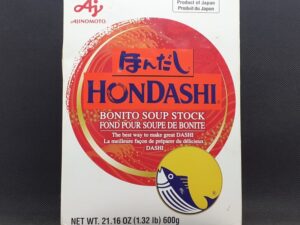
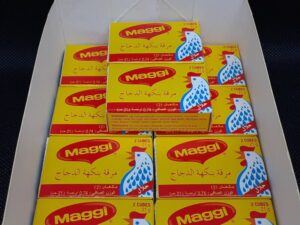
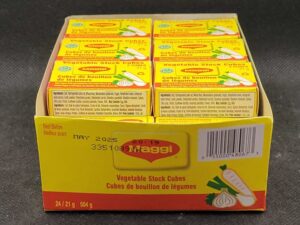
Thai Holy Trinity
The Thai Holy Trinity consist of;
- Galangal – A fragrant, slightly peppery rhizome, similar to ginger but more citrusy and pungent.
- Lemongrass – A citrusy, aromatic stalk that adds brightness and depth.
- Kaffir Lime Leaves – Highly aromatic leaves that give Thai dishes their signature citrusy fragrance.
This trio forms the foundation of many Thai curries, soups like Tom Yum, and stir-fries and is a key signature flavor profile.
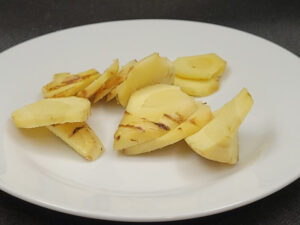
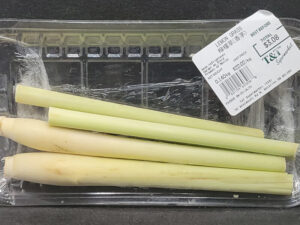
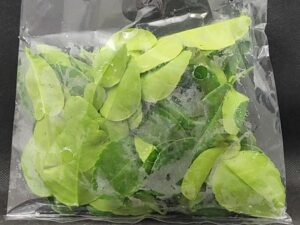
Fish Sauce
Thai cuisine frequently relies on fish sauce. In this Thai soup recipe, it adds savoriness, saltiness, and a hint of funk. The recipe starts with 1/4 cup, and extra fish sauce is placed at the table so everyone can adjust their bowl to taste.
For this recipe, always add fish sauce off heat, as it serves as a finishing sauce. This preserves its bold flavor, preventing heat from diminishing its intensity over time.
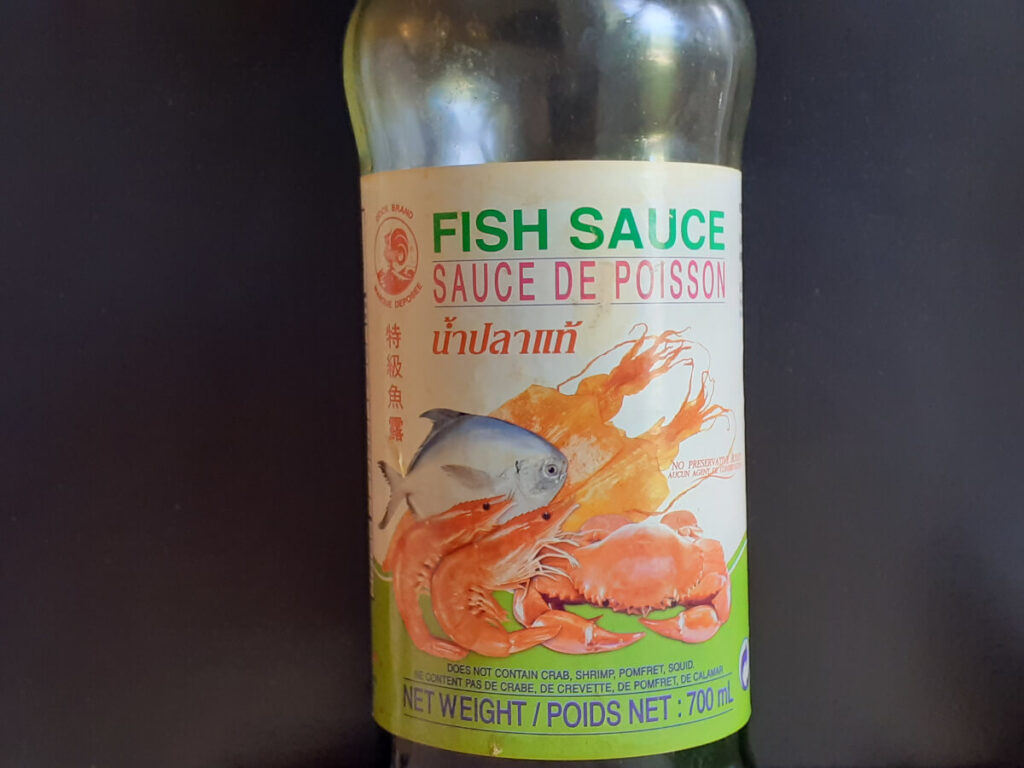
Lime Juice
Fresh limes are preferred, but often have bottled lime juice. If using fresh limes, you’ll need 1 to 3 limes to yield about 1/4 cup of lime juice. Lime wedges are also served at the table, allowing everyone to adjust their bowl to their own taste.
For this recipe, always add lime juice off heat. This preserves the fresh, vibrant flavor and prevents the heat from turning the juice bitter.
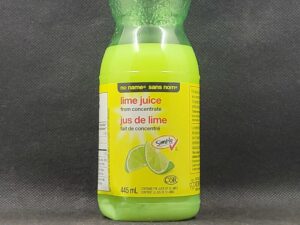
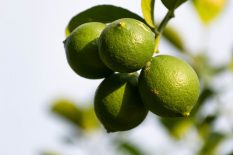
Sugar
Any type of Sugar will work here really. From the use of Cane Sugar, Brown Sugar, White Sugar, even Jaggery or Panela. It is also placed at the table for everyone to have the option of adding more for their very own bowl according to their own preference. Nam Prik Pao also contributes a bit of sweetness and some will rely only on this for the sweeteness or add additional sugar in small amounts.
In this recipe I am after a sweet taste so 1/4 C of Sugar is added. You can start with 1 Tbl and adjust based on your preference.
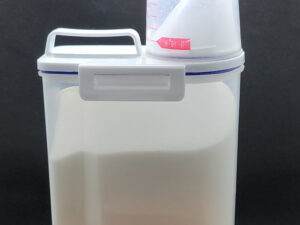
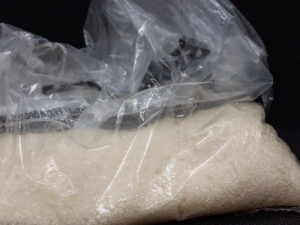
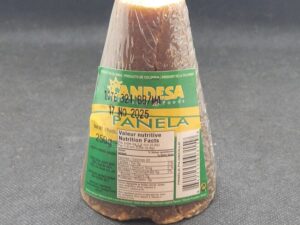
Nam Prik Pao
Nam Prik Pao or Thai Chili Jam is a key ingredient not only for the sweet smokey heat and flavor. But for coloring and introducing the fat as well. This too, is also placed at the table for everyone to have the option of adding more for their very own bowl according to their own preference. Optionally with Evaporated Milk or Coconut Milk if someone wishes to have the creamy version of Tom Yum.
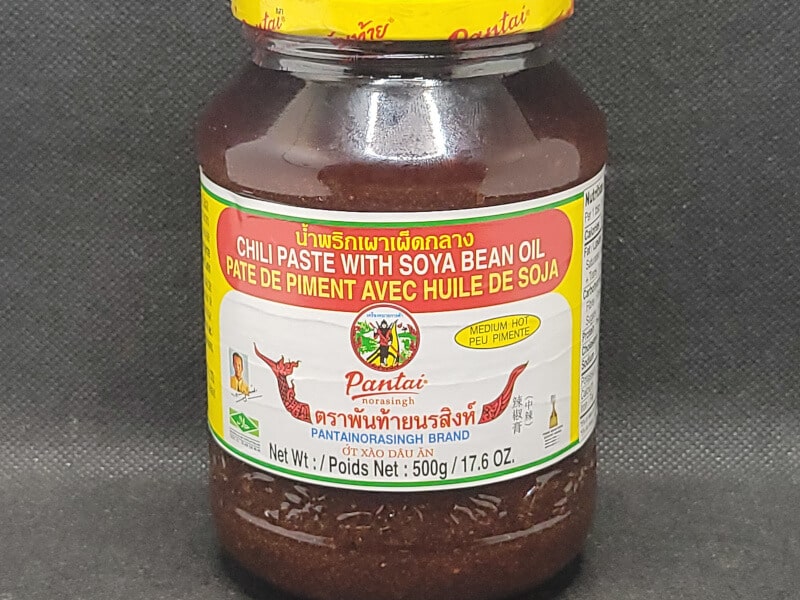
Thai Soup Vegetables
In Traditional Tom Yum all these vegetable are used with the exception of Tomatoes in most regions. In some regions Tomatoes are included and for this recipe, is an absolute must. So much so, that I opt to go with canned diced tomatoes with it’s juices. Not only does it assit in getting a redder color. But the tomatoes are just a burts of flavors that works wonderfully in this soup base, really a key ingredient for me. Fresh diced Tomatoes can be used too, about 5-8 Tomatoes.
Oyster Mushrooms are comonly used. However, I really prefer the King Oyster Mushrooms. Not only can you get 400 g worth of Mushroom at the same price (at least in my area) as 100 g of Oyster Mushrooms, a real money saver. But they are more bodied than Oyster Mushrooms, so the King Oyster Mushrooms are my go-to for this soup.
The use of red Thai Chlies with or without seeds is going to come down to personal heat preference. I use 2 Red Thai Chilies without seeds and another Red Thai Chili with seeds for three in total. What I am after is a very decent heat that causes the nose to sniffle. But all the other flavors are not overpowered. In particular a heat that is balanced against the sourness and sweetness for a sweet heat.
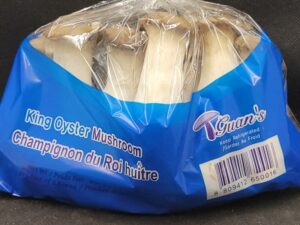
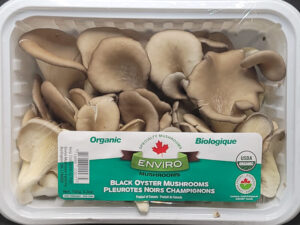
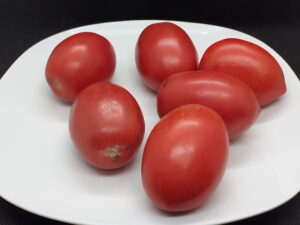
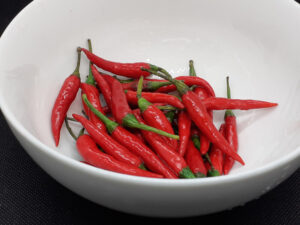
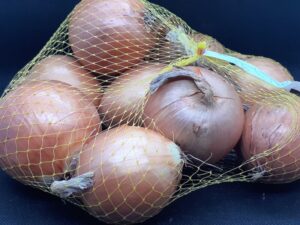
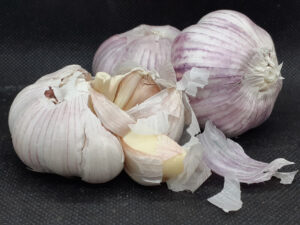
Protein
Shrimp is the choice of protein and when used is called Tom Yum Goong. When Chicken (Breast or Boneless thighs) is used, it’s called Tom Yum Gai.
The type of Shrimp is suppose to be Tiger Shrimp with the heads still intact, because they contain so much flavor. They are added to the Soup at the start to extract the flavors from the Shrimp heads and shells when creating the Soup Base.
Going with the proper Shrimp to use (Tiger Shrimp). Also means you will have to chop the heads off, peel and devien the shrimp yourself. I almost always have a bag of raw shrimp with the heads removed and deveind already. A 26-30 count and so most often use thism. I just wanted to point out that better flavor will be derived from using whole shrimp with the heads still on.
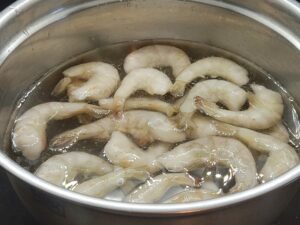
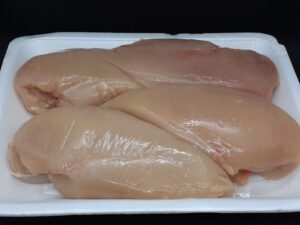
Thai Soup Garnish
Garnish the soup with either fresh cilantro or parsley, although you can also use dried versions. Add more fresh red Thai chilies as a garnish if you want extra heat.
Serve Tom Yum at the table with Nam Prik Pao, fish sauce, lime juice, sugar, and chilies, so everyone can customize their bowls to their own taste.
Optionally, provide evaporated milk or coconut milk at the table for those who prefer a creamy Tom Yum. Also known as Nam Khon or Tom Yum Nam Khon.
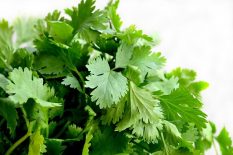
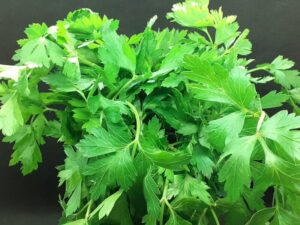
How to make Tom Yum
Thai Soup or Tom Yum comes together really fast. Making this a Quick meal. Excellent when pressed for time and the prep work is done while you start cooking right away. To make it even easier all you have to do is remember TOMYUM as each letter indicating your next step.
Make sure you start with already thawed shrimp. If using frozen Shrimp, place them into a bowl and fill with water to thaw quickly. Peel the shrimp and include when making the Thai Holy Trinity Soup base.
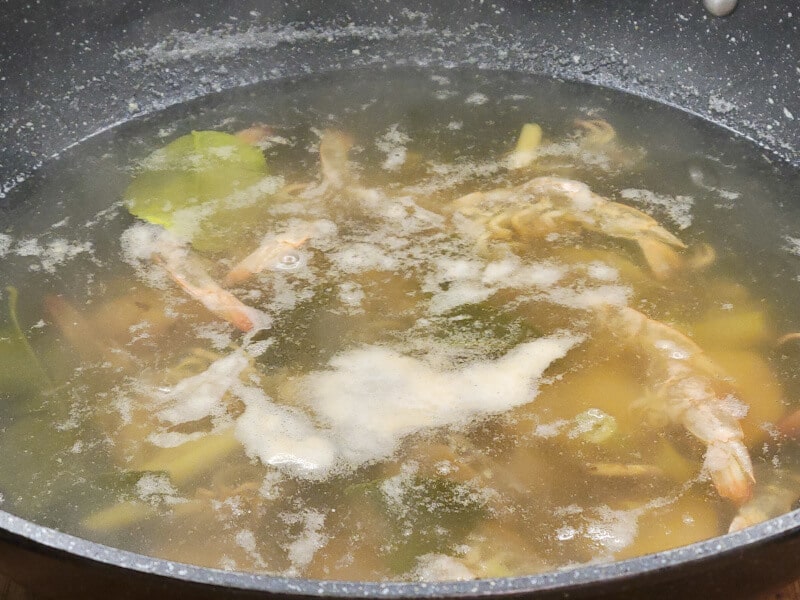
T – Thai Holy Trinity Soup Base
The Thai Soup base conist of water or broth with Shrimp Shells and Heads if included along with sliced Galangal, bruised and sliced Lemon Grass, and torn Kaffir Lime Leaves (the Thai Holy Trinity). Bring this to a boil and simmer for 10 minutes for a fragrant and flavorful Thai soup base.
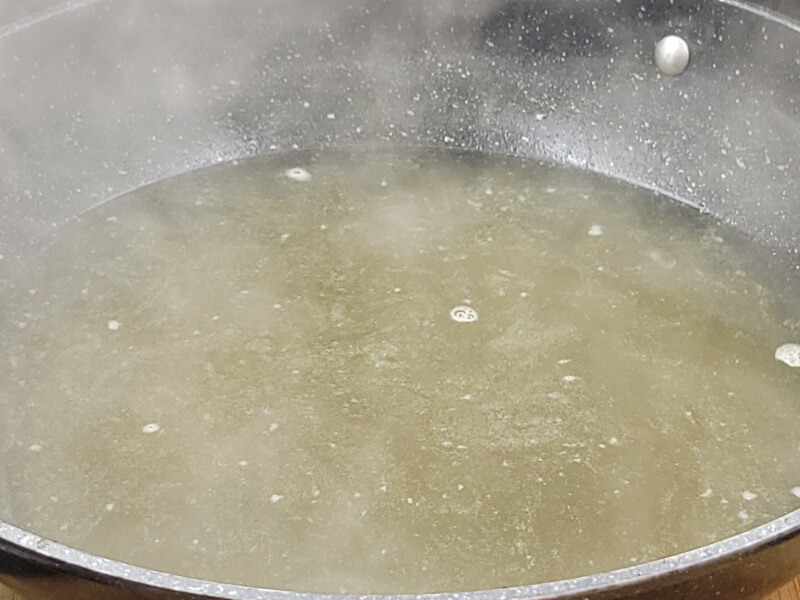
O – Omit Solids
Omit the solids from the soup for easier eating, by straining out the solids or using a spider to sccop the solids out to discard.
Optionally you can place the solids into a ziploc bag and freeze to include your next batch for a slight boost in flavor.
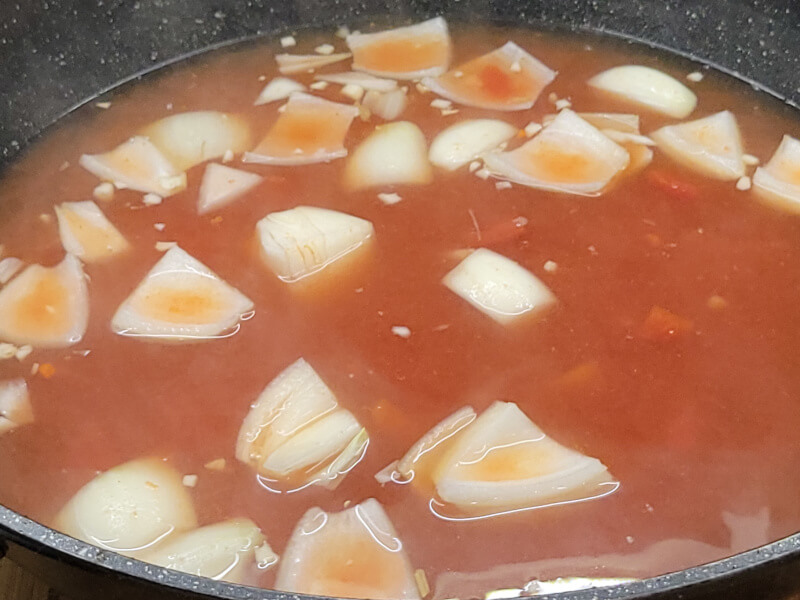
M – Mix in Simmering Ingredients
Mix in Mushrooms, Nam Prik Pao, Onions, Garlic, Red Thai Chilies, Sugar and Tomatoes (including the juices if using canned diced tomatoes).
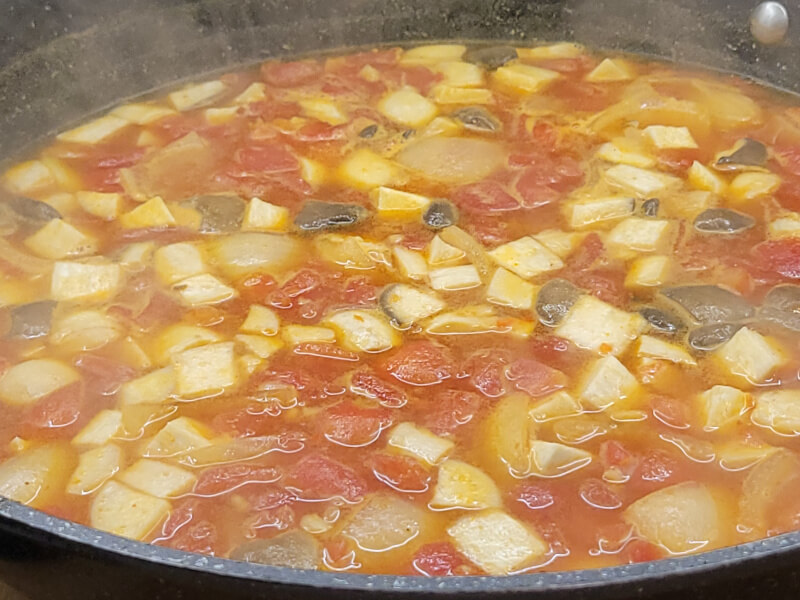
Y – Yield the Flavors
Yield their flavors and meld into a rich, balanced broth, letting the soup simmer for 10 minutes. Make adjustments to “Yeild” the perfect balance of spiciness and sweetness.
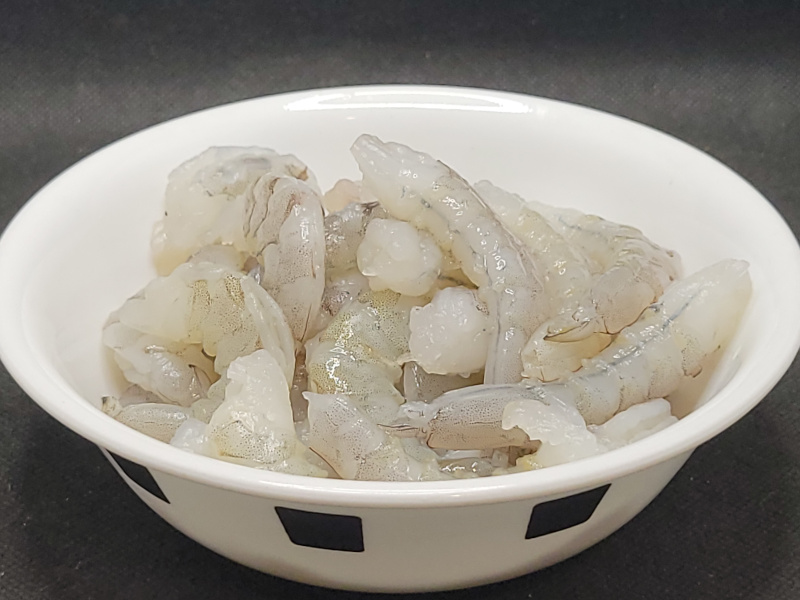
U – Unite with Protein
Unite the Shrimp or Chicken with the soup, letting it cook in the broth until fully done (Shrimp for 1-2 minutes, diced Chicken Breast thinly sliced for 5-8 minutes).
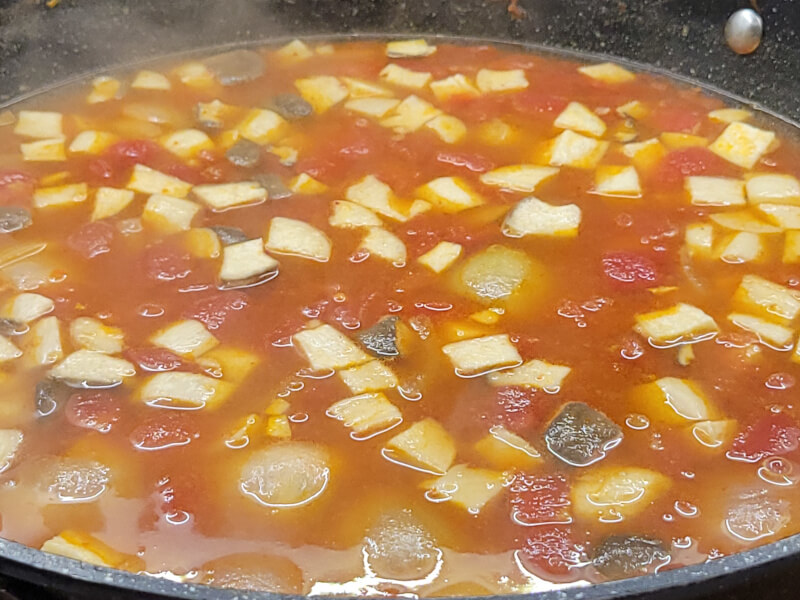
M – Moment of Perfection
For the Moment of Perfection, turn off the heat and Mix in Fish Sauce & Lime Juice to preserve their vibrant flavors. Ladle into bowls and garnish with Cilantro, extra Lime wedges, and sliced Thai Chilies before serving.
Serving Thai Soup
Thai Soup or Tom Yum can be served just by itself, but is commonly served with a small bowl of Steamed Jasmine Rice. Another way that I really enjoy, is with Rice Vermicelli Noodles.
This recipe is enough to make 4 hearty & filling servings or more, if using a smaller quantity as an appetizer or lunch. Although if stretching this out for 8 servings, then use 2 lbs of Shrimp instead of 1 lb, everything else can remain the same.
Steamed Jasmine Rice
Make this the same as Steamed White Rice using Thai Jasmine Rice with the following ingredients.
- 1 Cup Jasmine Rice washed & strained
- 1 Cup Water
- 1 tsp Sea Salt & Sesame Oil, each
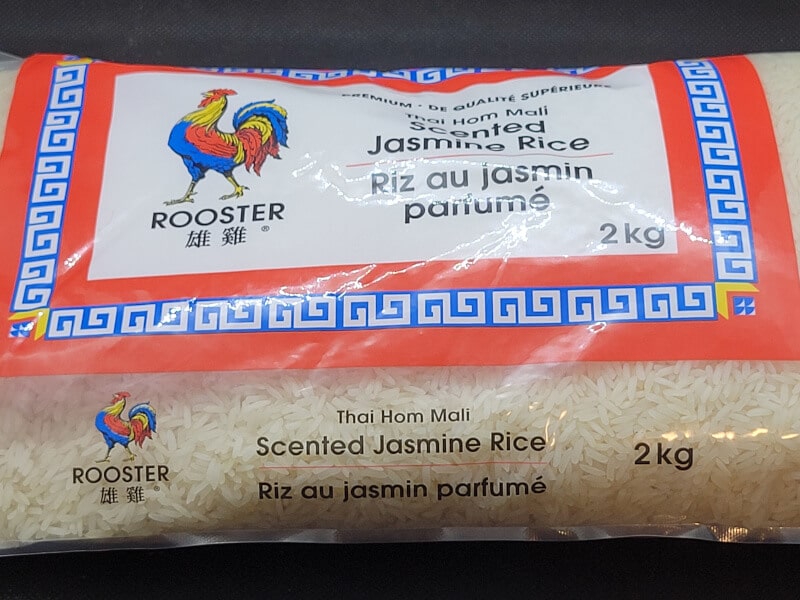
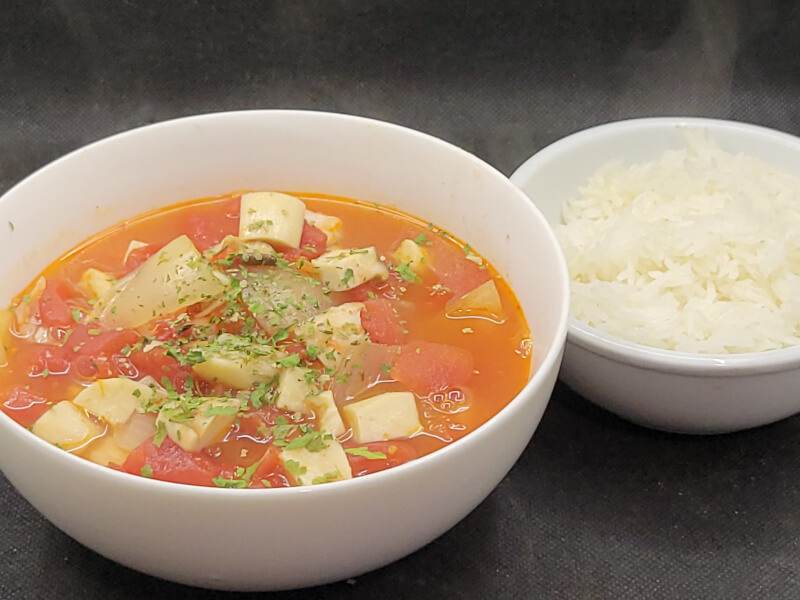
Rice Vermicelli
You don’t need much for 4 servings, only about 1/4 lb or 100g to 114 g of Rice Vermicelli is sufficient for 4 + bowls of Tom Yum.
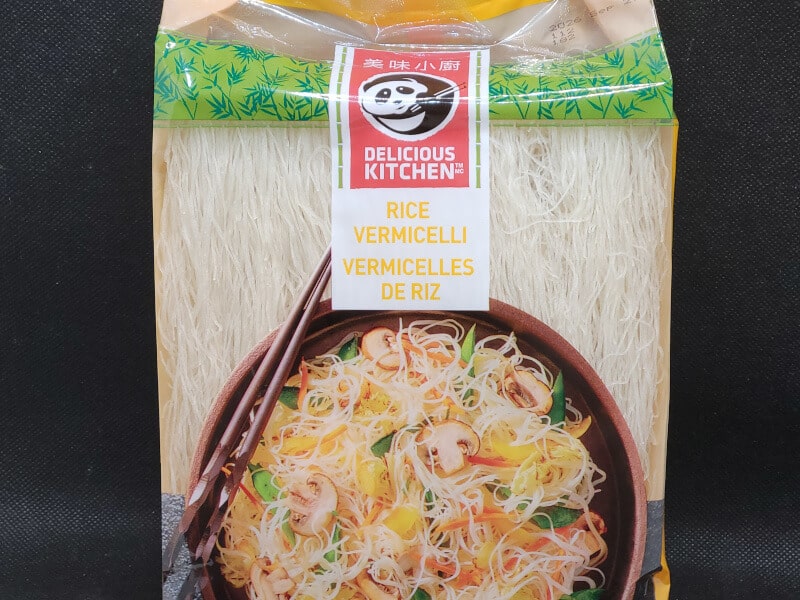

Rice Vermicelli Noodles
Soak the Rice Noodles in hot tap water until ready to serve. Then portion an amount out to place into the bowl before ladling in the Tom Yum and garnishing.
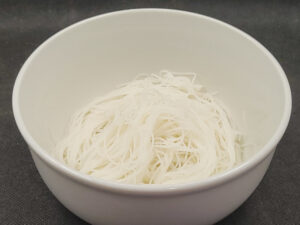
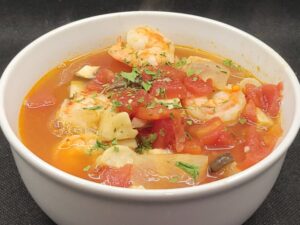
Tom Yum Drink
This can be made as a drink too and really effective for targeting a sore throat. It a delicious drink and super soothing to the throat. Especially if sick or down with a dry cough. Just the soup base is good to throw together and pour into a mug to sip on. Combine the following and simmer and then strain out. Except the Fish sauce & Lime Juice, which is added last after simmering and straining.
- 8 C Water
- 8 Lime Leaves – Dried or Fresh
- 2 Inch Galangal – sliced thinly
- 1 Stalk Lemon Grass – Smash the lemon grass
- 1 Tbl Hondashi – or 1-2 Maggi Chicken or Vegetable Bouillon
- 1/4 C Sugar – or less for not as sweet
- 1/4 C Nam Prik Pao – also known as Thai Chli Jam
- 1/4 C Fish Sauce – added last off heat
- 1/4 C Lime Juice – added last off heat
- 3 Cloves Garlic – minced or chopped
- 2-3 Red Thai Chilies – minced or chopped, more for garnishing
- 1 Large Onion – Cut in half and each half quartered
- 1 Can Diced Tomatoes – or 5-8 Roma Tomatoes Diced
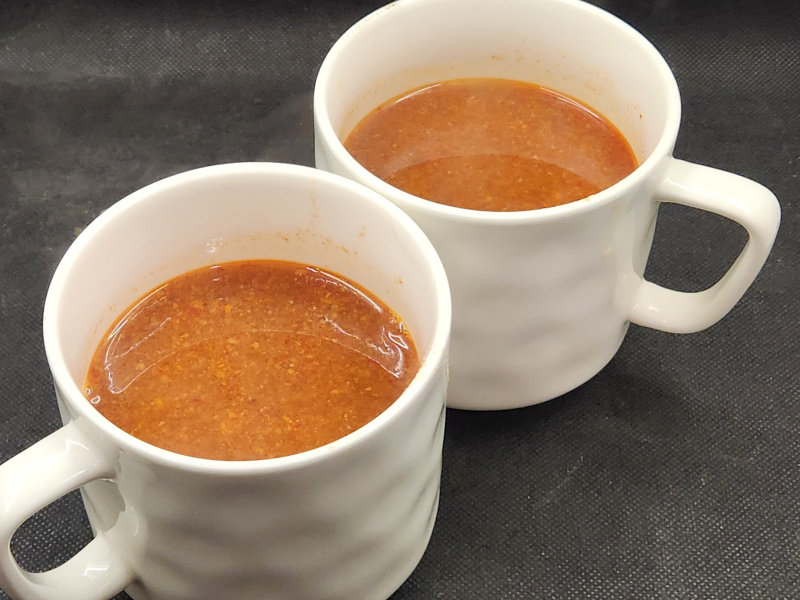
Tom Yum Soup is a must-try for any Thai food lover. Its bold flavors, health benefits, and versatility make it a great dish to enjoy any time of the year. Now that you know how to make it at home, give it a try! You may come back soon enough to make it again, it’s that good!
Equipment
- 1 Wok
- 1 Spider
- 3 Bowls for thawing Shrimp, straining out the solids, and Vegetables
Ingredients
- 1-2 lbs Shrimp - Medium to large, raw and shelled yourself
- Fresh Cilantro - to garnish, can use Parsley
Soup Base
- 8 C Water
- 8 Lime Leaves - Dried or Fresh
- 2 Inch Galangal - sliced thinly
- 1 Stalk Lemon Grass - Smash the lemon grass
- 1 Tbl Hondashi - or 1-2 Maggi Chicken or Vegetable Bouillon
- 1/4 C Sugar - or less for not as sweet
- 1/4 C Nam Prik Pao - also known as Thai Chli Jam
- 1/4 C Fish Sauce - added last off heat
- 1/4 C Lime Juice - added last off heat
- As Desired Canned Evaporated Milk or Coconut Milk - Optional, for a creamy version, added last
Vegetables
- 400 g King Oyster Mushrooms - Quartered and chopped or torn into pieces
- 3 Cloves Garlic - minced or chopped
- 2-3 Red Thai Chilies - minced or chopped, more for garnishing
- 1 Large Onion - Cut in half and each half quartered
- 1 Can Diced Tomatoes - or 5-8 Roma Tomatoes Diced
Instructions
- Thaw Shrimp: Place frozen shrimp in a bowl of water to thaw. Prepare the other ingredients. Shell the shrimp and set aside for the soup base.If using tiger prawns or whole tiger or white shrimp, chop the head off, shell and devein. Save the heads and shells for the soup base. If serving with steamed jasmine rice or rice vermicelli noodles, prepare these first to have ready when the Thai Soup is ready.
- T — The Thai Soup base consist of water or broth with Shrimp Shells and Heads if included along with sliced Galangal, bruised and sliced Lemon Grass, and torn Kaffir Lime Leaves (the Thai Holy Trinity). Bring this to a boil and simmer for 10 minutes for a fragrant and flavorful Thai soup base.
- O — Omit the solids from the soup for easier eating, by straining out the solids or using a spider to scoop the solids out to discard. Optionally you can place the solids into a Ziploc bag and freeze to include in your next batch for a slight boost in flavor.
- M — Mix in Mushrooms, Nam Prik Pao, Onions, Garlic, Red Thai Chilies, Sugar, and Tomatoes (including the juices if using canned diced tomatoes).
- Y — Yield their flavors and meld into a rich, balanced broth, letting the soup simmer for 10 minutes. Make adjustments to “Yield” the perfect balance of spiciness and sweetness.
- U — Unite the Shrimp or Chicken with the soup, letting it cook in the broth until fully done (Shrimp for 1–2 minutes, diced Chicken Breast thinly sliced for 5–8 minutes).
- M — Moment of Perfection! Turn off the heat and Mix in Fish Sauce & Lime Juice to preserve their vibrant flavors. Serve immediately, garnished with fresh or dried cilantro or parsley. Alongside Chili Flakes or minced Red Thai Chilies, Nam Prik Pao, Sugar, Lime Juice & Fish sauce at the table, for everyone to be able to customize their own bowl of Yummy Tom Yum. Enjoy!
Notes
For Serving
- Jasmine Rice: Make Steamed White Rice with Thai Jasmine rice using;
- 1 C Jasmine Rice
- 1 C Water
- 1 tsp Sesame Oil & Sea Salt, each
- Rice Vermicelli: Soak 1/4 lb or 100g to 114g Rice Vermicelli Noodles in hot tap water and then place a portion in bowls. Ladle Hot Tom Yum over the noodles and garnish to serve. This is enough noodles for 4 bowls.

